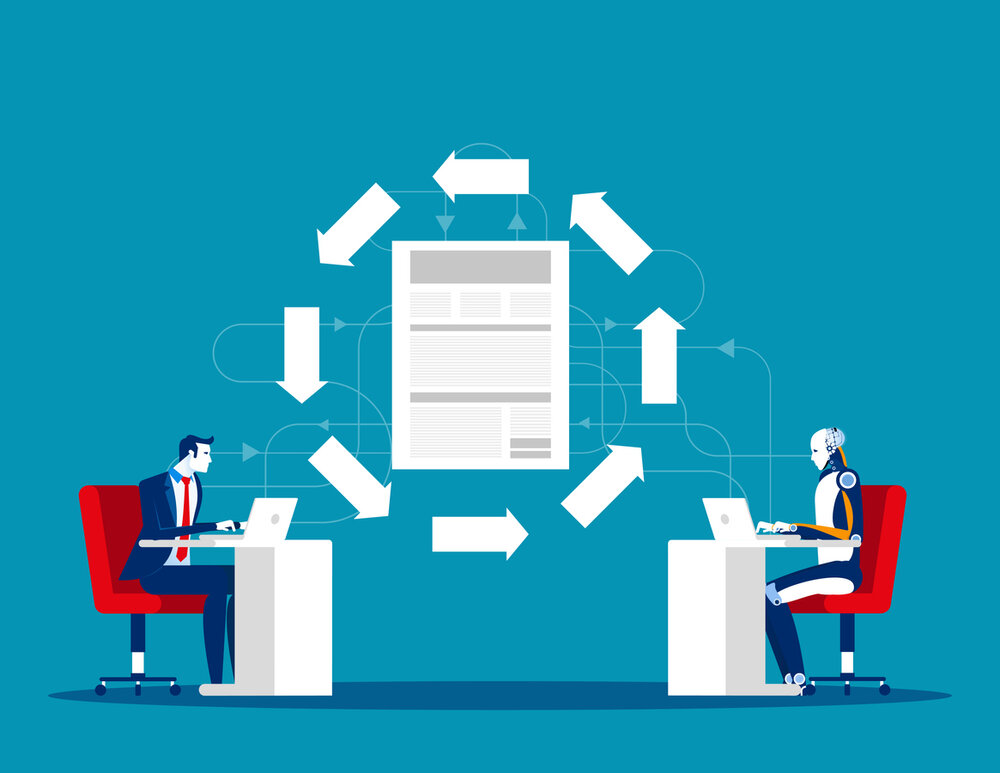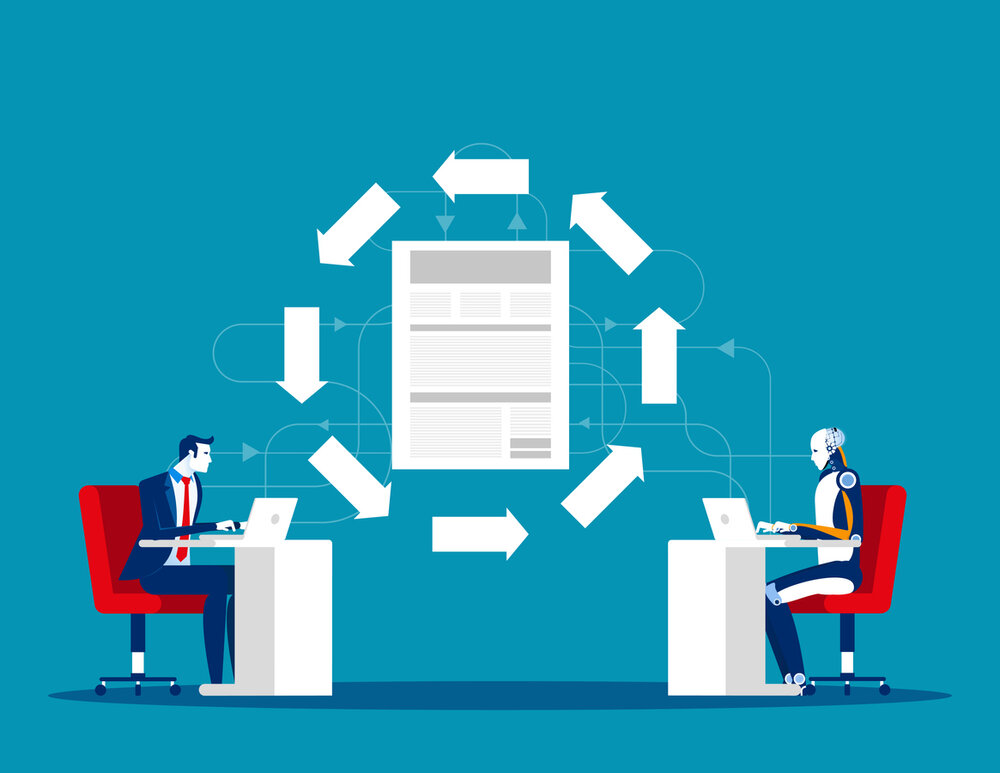How to Use RPA to Increase Employee Retention
Original post from https://www.cigen.com.au/cigenblog/

Robotic process automation may sound like an impersonal way of doing business. After all, it boils down to using machines such as software robots, to mimic repetitive human actions and to fulfill the tasks faster, more accurately, and in a more secure manner.
But there’s more to it than that. Starting the automation journey in your company empowers both your employees and your customers. The employees no longer have to carry out routine, monotonous tasks, like migrating raw data between Excel files, because the bots can do it error-free, more productively, and more efficiently.
The staff is therefore clear to engage in more valuable jobs that leverage human-specific abilities such as creativity, complex decision making or communication skills, and, consequently, their level of job satisfaction increases.
This is the main rationale for using robotic process automation to increase employee retention since talents are less likely to leave jobs that involve less drudgery. Your staff will also have greater flexibility and time to engage with customers and, as a consequence, to provide higher-value, more empathic customer service. This, in turn, improves customer satisfaction. This is why RPA is your competitive advantage.
From this perspective, UiPath’s motto should come as no surprise: “We make robots so people don’t have to be robots.”
In fact, RPA may be precisely what allows corporations to go beyond the image of cold, heartless, and faceless entities. When your employees do not have to spend long hours copy-pasting data or doing payroll administration, it is a lot more likely that they will attend customers with greater care, thus improving customer experience.
How robotic process automation increases employee retention
According to Martin Weis, EMEIA Robotics Leader, EY, repetitive tasks are a key reason why people give up their jobs, which, in turn, calls for up to 30% hiring annually simply to renew the workforce.
“Repetitive tasks are a key reason why people give up their jobs, which, in turn, calls for up to 30% hiring annually simply to renew the workforce.”
CLICK TO TWEET
So indeed, by removing the burden of dull, value-less jobs from employees’ shoulders, the employee retention rate increases. In fact, contrasting the retention rate before and after RPA implementation is a relevant indicator of automation-driven benefits. Let us then see how exactly you can use RPA to increase employee retention rates.
1. Acknowledge the psychological effects of RPA deployment and proactively try to minimise the side effects
Leaving humans aside and focusing on robot-related issues was one of the RPA mistakes that we warned you about at the beginning of last year, so that you can proactively avoid them.
Despite the objective fact that bots allow human employees to focus on jobs that involve complex decision making, creativity, thinking “outside the box”, or human-to-human interaction skills, employees whose jobs are at risk of being replaced by software robots are likely to feel threatened at least initially, and hence oppose automation.
Our recommendation in order to avoid it was educating the staff regarding what robots can and cannot do, and how the bots will allow them to put to better use their human-specific expertise. The same holds true today.
The first step towards using RPA to increase employee retention, is to take seriously and try to temper employees’ emotional resistance, emphasizing the increased job satisfaction brought about by digitisation. Human-centered change management programs, for instance, are one way to ensure that the transformative potential of RPA is well received by your employees.
Thank you! An expert will get in touch soon.
2. Encourage collaborative work
Completing work in isolation is no longer a viable option, given the increasingly intricate processes that are necessary to accomplish business goals. Collaboration is the language of the workforce of the future. Such a claim is supported by the fact that 66% of the respondents to a 2019 Forrester Consulting survey conceded that RPA allows employees to interact more among them.
The feeling of being a team member makes it less likely to want to leave the team, and thereby reduces employee turnover. A direct consequence of this collaboration-based approach to work is that it allows employees to focus on tasks that can be characterised as more strategic and meaningful.
Social scientists have shown that perceiving work as meaningful increases job satisfaction. Drawing on the bottom-up approach to automation, which brings to life the automation opportunities at the individual and task level, empowers each staff member to share their ideas with the others.
This has a wide range of benefits, from enhancing employees’ positive morale to increasing companies’ scalability and profitability. This cooperative paradigm shift also goes hand in hand with workflow optimization via human-robot collaboration.
3. Adopt a ‘lifelong learning’ perspective of work
According to a GO-Gulf survey, insufficient training accounts for 40% of workers leaving their jobs within the first year. The ‘lifelong learning’ approach is thus to be operationalised by the constant investment of financial and knowledge resources in re-skilling your employees.
RPA can be helpful here because, when your employees need to spend less time on completing tedious, routine tasks, they can put to better use the time thus gained and wholeheartedly engage in further training to supplement their skill sets.
In fact, the above-mentioned Forrester study found that, for 57% of the companies, robotic process automation improved employee engagement. Relatedly, according to the LinkedIn 2019 Workplace Learning Report, 94% of employees said they would stay longer with companies that invest in their professional development.
Conclusion
Some of us are still bothered by the worrisome question regarding the possibility that software robots will replace the human workforce at some point in the future. But ‘workforce replacement’ is more of a Sci-Fi scenario than an accurate, realistic description of the future.
A better way to put it is that bots are going to replace specific tasks, namely rules-based, highly predictable, routine ones, such as invoice processing, price comparison or data extraction. This is to say, just like machines reconfigured labour during the Industrial Revolution, so are bots simply changing the way we work today.
People’s ambition to stay up to date with technological developments by continuous training, or an increased focus on face-to-face, customer-intensive tasks, are characteristic features of this new perspective of work. As a consequence, employees become more engaged and more satisfied with their jobs, and hence less likely to leave the current workplace.
Leave a Comment
You must be logged in to post a comment.








